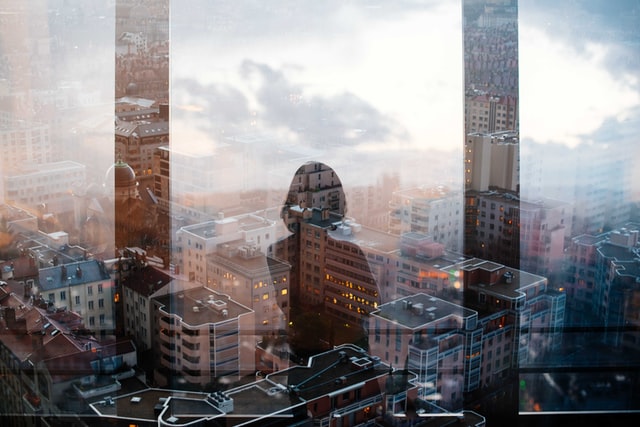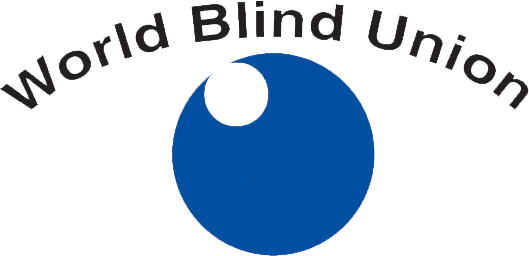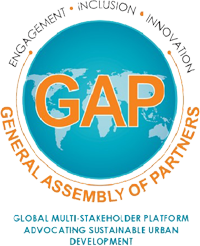Series 2 - Webinar 3
2020: A Year without Public Space under the COVID-19 Pandemic
Creating accessible and inclusive public spaces with/for resilient communities
Thursday 18 June 2020 / Series 2 (June) - Webinar 3
>>> Speakers and agenda
>>> Programme of our COVID-19 initiative
The webinar was initiated and hosted by Luisa Bravo (City Space Architecture / The Journal of Public Space, Italy), Hendrik Tieben (The Chinese University of Hong Kong, Hong Kong), part of the series “2020: A Year without Public Space under the COVID19 Pandemic”. This webinar looked specifically at initiatives and experiences of creating accessible and inclusive public spaces for resilience communities across the globe (Canada, USA, Taiwan, Brazil, Australia, Lebanon, and UK).
Credits
Recorded video of the webinar produced by Yin-Fen Chen, The Chinese University of Hong Kong
Summary of the webinar curated by Stephanie Cheung, The Chinese University of Hong Kong
Insights from speakers
Hannes Juhlin Lagrelius, World Blind Union, Toronto, Canada
Hannes started his presentation by presenting the context of the global changing population dynamics in relation to disabilities, where 15% of the global population experience some form of disabilities and that by 2050, 20% of the population will be above 60 years old. The growth of cities requires a corresponding growth in inclusive spaces and services. There are four core global instruments that specifically stress the importance of universal design and accessibility: UN Convention on the Rights of Persons with Disabilities, The 2030 Agenda, Sendai Framework on Disaster Risk Reduction and the New Urban Agenda. Accessibility is cross-cutting in the UN Convention, the only legal-binding framework for state parties, not just in the physical realm but also products and services.
Hannes shed light on the imperatives for universal accessibility, explaining how it benefits everyone by creating inclusive spaces, a crucial medium for inclusive cities that encourage diverse and vibrant communities. Universal accessibility is also a critical link in everyday life mobility chain and improves safety and resilience. Hannes called for practitioners’ recognition of the wide spectrum of human abilities and design for such diversity ‘right from the start’ so as to lessen the risk of retrofitting and reduce cost. Some of the main challenges ahead are shrinking public spaces, insufficient integration of the Universal Design principles in planning and design policies and practices, and the lack of participatory planning with persons with disabilities. In view of this, the World Blind Union proactively works in the urban development field, including in an agreement with UN-Habitat, knowledge production, policy development and towards increased engagement of persons with disabilities in discussions guiding urban development.
Katherine Kline, GAP General Assembly of Partners Older Persons, New York, USA
According to the United Nations, 46% of the older population (60 years and older) at some point will have a disability. Habitat III identified global ageing as one of the ten key emerging themes, and by 2050, one in five older persons will be living in Asia, with steep growth in Africa, not just in developed countries. Katherine stated how public space is an important vehicle to connect with all generations, specifically for older people who live alone and might not speak the local language. Accessible design should take an intergenerational cross-age perspective, with elements such as lighting, flat path, ramp, accessible entrance, water fountain, shade, bench, clean accessible bathrooms, also important is the ease of accessing public space through public transportation, and that disabilities have multiple dimensions, including autism.
Katherine also shared several good cases: the Dutch Hogewey Dementia Village recreated traditional communities for 150 elders with severe dementia, offering a safe and free environment. Restorative Garden in Cleveland, USA is an example of horticulture therapy, with winding pathways, braille on railings, grass that holds wheelchairs, and plants carefully picked for tactile connection. NYC “Parks Without Borders” initiative encourages the elimination of fencing while being enclosed. Indoor public spaces like libraries should also be part of the discussion. Lastly, it’s essential to encourage older persons to return to public space after COVID-19, a significant act for them to feel less isolated. Katherine suggested setting early hours and designated areas for elders so as to reduce their fear of using public space.
Shu-Ti Chiou, Health & Sustainable Development Foundation, School of Medicine, Yang-Ming University, Taiwan
Dr. Chiou highlighted the importance to engage political leaders, different departments, and most importantly users to work together for public space enhancement and health promotion. With over 20 years of experiences in the practice of healthy city and healthy community, Dr. Chiou has been working tirelessly to adopt WHO’s age-friendly city model in Taiwan and to encourage mayors to adopt a cross-department approach to the matter. Some of the concerns she has received over the years include cost, difficulty to design for universal accessibility, and the challenge to meet everyone’s expectations and needs. She advocated for the best use of existing budgets and to take reference from international good case practices, and to respond to elders’ requests for improvements, namely unevenness of walkways, non-shaded bus stops and bench, and age-friendly restaurants. These led to success in the first city, which motivated all other cities in the country to follow suit.
Nelson Saule Junior, Global Platform for the Right to the City, Polis Institute of Studies, Training and Assistance in Social Policies, São Paulo, Brazil
Over the past 20 years, Nelson has been working towards bringing the perspective of human rights in the cities, in the aspect of obligations and responsibilities for governments and authorities, and the aspect of legal recognition of the right to the city. For instance, the Right to the City is a legal right recognized in Brazil. The Global Platform also worked at Habitat III to incorporate the Right to the City in the New Urban Agenda. Right to the City is the “right of our inhabitants, present and future, permanent and temporary, to use, occupy, produce, enjoy inclusive and sustainable cities, villages, and human settlements, defined as a common goal”, such definition highlights the perspective of the city as a common good. Quality of public space is one important component, so are healthy political participation, no discrimination, gender equality, cultural diversity, inclusive citizenship and social function of the city.
Public space plays an important role in the political, cultural, economical and social dimensions of a city. The recent global protests against racial discrimination took place at streets, parks, squares. It is an important place for citizens to raise their voice and fight for democracy, to participate in community planning and budgeting, and the management of spaces. Public space is also an important ground for the recent sustainable mobility movement. Looking at public space from an economic perspective, the informal economy relies on streets and the safeguarding of the space links directly to the rights of the informal workers. Urban agriculture and food security are also important movements in public areas. Culturally, these are places for artistic expressions, especially among young people, and for public services like libraries and schools.
Silvia Tavares and Nicholas Stevens, University of the Sunshine Coast, Queensland, Australia
Silvia opened the discussion with the question of the possibility and the role of practitioners to design safer public spaces that cope with future outbreaks. The 2011 earthquake in Christchurch is an example of a fast disaster where 70-80% of the buildings in CBD had to be rebuilt. Climate change, on the other hand, is known as a slow disaster, Silvia proposed that COIVD-19 sits in between the two. The slower the disasters, the higher is the chance that we choose not to act. Applying lessons learnt from Christchurch, such as safe and creative approaches (pop-up) to bring life back to the city, Silvia posted two questions: whether better-performed public spaces in the event of another outbreak can be created if safety is the main design priority, and whether there are new dimensions (values, functions, features) that should be taken into account to create these better-performed spaces.
Nicholas explained how the team used the sociotechnical systems to approach the questions raised, a system often applied in safety critical systems designs such as road transport, aviation, and healthcare. He proposed the idea of viewing the design of public space as the design of a safety critical system to better improve resilience in future disasters. The underlying idea is that “safety is impacted by the decisions and actions of every human and non-human element within that system that events and outcomes are caused by multiple interacting contributory factors”. Overlaying the implications of COVID lockdown with the systems model developed in 2015 of universally accessible public space, Nicholas discovered that 15 out of 24 critical functions of public spaces ceased to exist under lockdown, which in turn affected individual and community health and well-being. Learnings from fast disasters also include how previous models lack safety critical functions for public spaces to be resilient, such as retreat and individual space, optimising environmental comfort and the ability to leave, maximising the use of soft landscape and protection from adjacent built form. These insights would significantly contribute to future resilience building and further understanding of the complexity in city systems.
Wael Sinno, UN-Habitat Lebanon, Beirut, Lebanon
UN-Habitat Lebanon undertook rapid field assessments in April 2020 to identify current responses of local authorities to COVID-19 Pandemic and the key gaps and challenges. The aim was to check ways to support them in order to contribute to a broader coordinated response and propose urgent actions for the most vulnerable locations. The assessments covered 8 governorates and a total of 550 municipalities, and revealed the following: “Crisis Cells” were established at Governorate level and “emergency committees” on unions and municipalities level, focusing on sterilizing of public spaces, distribution of masks and gloves, and fixing checkpoints at main entry points; lack of access to clean water; improper management on waste; unclear guidelines on preparing isolation centers, etc. The assessments further identified immediate, medium and long-term needs and UN-Habitat worked closely with the governorates to prioritize actions and with municipalities to identify projects per unit, all compiled into the UN-Habitat Lebanon Unions of Municipalities’ COVID-19 Rapid Assessment Report.
One immediate project UN-Habitat Lebanon is the provision of handwashing stations to improve hygiene and sanitation practises in order to reduce the risks of COVID-19 or any similar health disease. 22 stations will be established in crowded areas, and municipalities and community focal persons will receive capacity building training and will be responsible for the maintenance and operations. In addition, 992 hygiene kits were distributed to vulnerable urban communities.
Commentary: Alessandro Melis, Cluster for Sustainable Cities, University of Portsmouth, United Kingdom / Curator of the Italian Pavilion 'Resilient Communities', 17th Venice Architecture Biennale (2021)
A cross-disciplinary approach is pivotal for the understanding of resilience and the application of the concept. Inclusivity and diversity are not intended only as idealistic terms of social justice, but an opportunity of creating a resilient environment. Creating such spaces is part of making the urban ecology ecosystem more balanced and resilient, and Katherine had mentioned many functional elements. All presentations had illustrated how many minorities create a majority and how the world is an integration of diversities. Echoing Shu-Ti, Alessandro agreed with the importance of communicating with decision-makers and to stress the functional merits of creating an inclusive space, its convenience, economic merits, usability and resilience. Alessandro also concurred Hannes’ idea of how universal design makes a place inclusive and attractive and his definition of public space as a critical link in the mobility chain highlighted public space’s significance as the engine of the city.
The concept of Right to the City is also largely discussed in Italy and Alessandro particularly wanted to highlight the importance of education in the public space and the approach of informality as a means of sustainability. He also applauded the integration of short-term and long-term approach of Silvia and Nicholas research and agreed that a methodology is necessary to approach this matter in the long-term, with public space playing a pivotal role as the deployment of infrastructure in any future crisis.
Roundtable discussion
Luisa Bravo: Do you agree that “Public space is a lifeline for post-lockdown cities”?
Katherine reminded all of the fears many people have in relations to using public spaces when there are still many unknowns about the virus, yet she also shared an encouraging example from a Japanese city that was levelled in a natural disaster. The older persons were the ones who created a community center and cooked to bring the community back to life. Shu-ti thought that the lockdown provided an opportunity to look closely at the value and the importance of public space, and to rebalance the risks and the benefits associated with the responsible use of public space while improving sanitation provision.
Hannes reflected on how COVID-19 had not only revealed that many of our systems were not prepared sufficiently but heightened the challenge to keep social distance due to congested pedestrian ways. This further hindered accessibility in already troubling times. Unequal access to information was another revealed barrier that would be key to address post-lockdown. Nelson shared how in Brazil many still used the streets for informal economy out of necessities and thus created tensions for using public spaces. At the same time, many realized the importance of the spaces in multiple dimensions.
Reading materials
Cities 4 All campaign (Global Compact for Inclusive and Accessible Cities)
Global disability rights movement
UN-Habitat Lebanon Unions of Municipalities’ COVID-19 Rapid Assessment Report
Provision of lifesaving COVID-19 protection gear to vulnerable households living in Sabra, including refugees and migrants, in order to help them better protect themselves against the spread of COVID-19 (Video Credit: UN Habitat Lebanon).
Public space a 'lifeline' for post-lockdown cities, by Carey L. Biron (15 June 2020)

Photo by Etienne Boulanger on Unsplash



